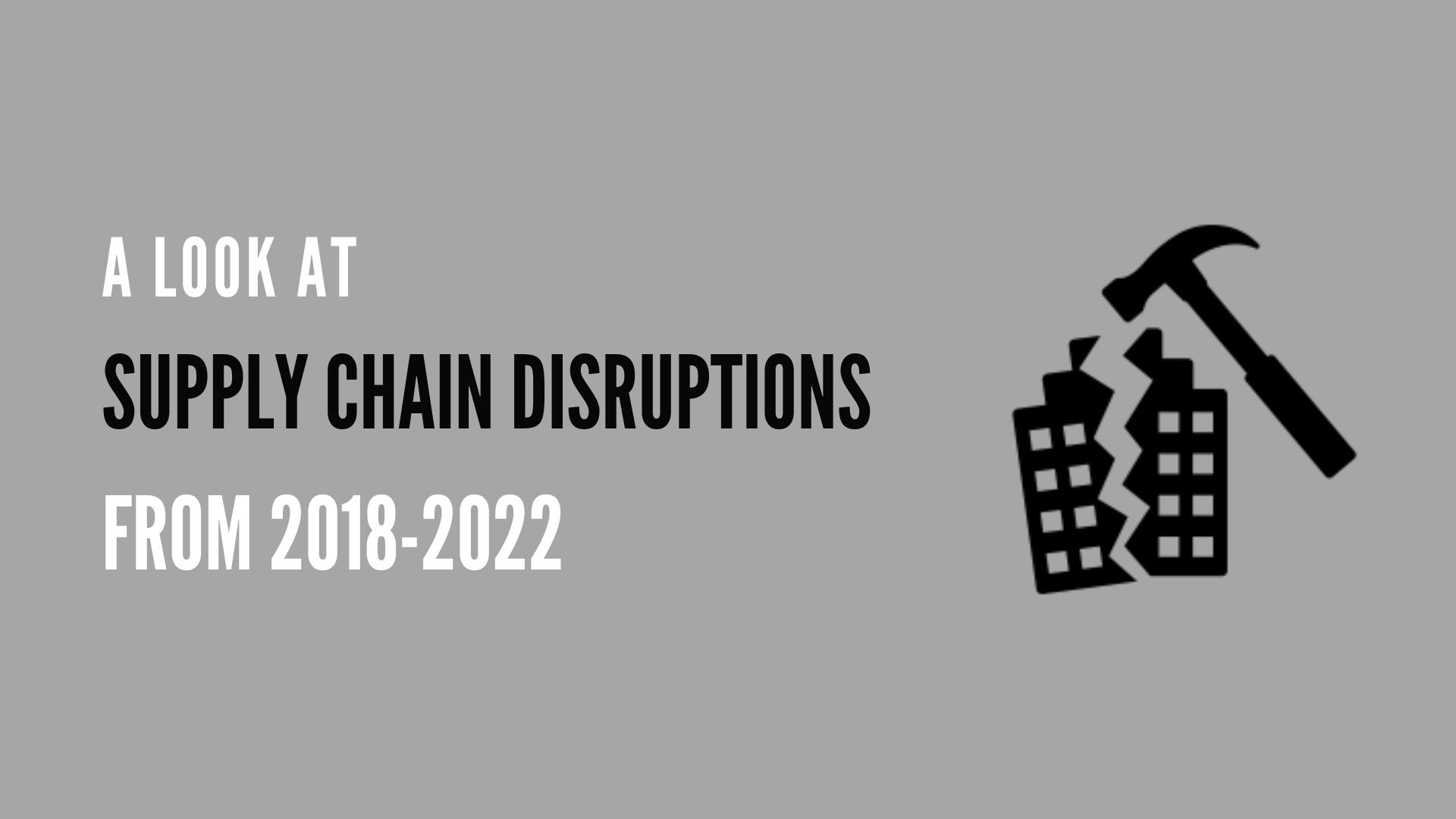The past few years have been a testament to the vulnerability and complexity of global supply chains. Between 2018 and 2022, a myriad of events showcased the fragility of interconnected markets and the domino effect that can ensue from a single disruption. This blog will explore notable examples of supply chain disruptions during this period, their impacts on industries, and insights into how businesses can better prepare for future uncertainties.
1. The US-China Trade War (2018-2019)
The onset of the US-China trade war marked a significant upheaval in global trade dynamics. Imposed tariffs and counter-tariffs led to increased costs for raw materials and finished goods, compelling businesses to reevaluate their supply chain strategies. Companies in electronics, automotive, and consumer goods industries, heavily reliant on Chinese manufacturing, faced substantial challenges. The trade tensions highlighted the risks of over-reliance on a single country for materials and production, urging companies to diversify their supply sources and consider reshoring or nearshoring options.
2. The Global Semiconductor Shortage (2020-2022)
Triggered initially by pandemic-driven demand for consumer electronics, the semiconductor shortage was exacerbated by several factors, including production halts, geopolitical tensions, and extreme weather events affecting key facilities. This shortage had a ripple effect across various sectors, most notably the automotive industry, which saw significant production delays and losses. The crisis underscored the need for strategic stockpiling, improved forecasting, and investment in domestic chip manufacturing capabilities.
3. The Suez Canal Blockage (March 2021)
When the Ever Given container ship wedged itself across the Suez Canal, it highlighted a chokepoint in global logistics. The blockage stalled the flow of goods between Asia and Europe, delaying shipments and leading to a surge in shipping costs. This incident served as a wake-up call for businesses to reassess their routing strategies, enhance contingency planning, and consider the benefits of multimodal transportation to mitigate single-point vulnerabilities.
4. COVID-19 Pandemic Disruptions (2020-2022)
Undoubtedly, the COVID-19 pandemic has been the most significant disruptor, affecting every link in the supply chain. From factory shutdowns and labor shortages to transportation bottlenecks and fluctuating demand patterns, businesses worldwide struggled to maintain operations and fulfill orders. The pandemic underscored the importance of digital transformation, agile supply chain models, and robust business continuity plans to adapt to rapidly changing circumstances.
5. The Ukraine-Russia Conflict (2022)
The conflict between Ukraine and Russia further strained global supply chains, particularly affecting the energy sector and agricultural commodities. Rising fuel prices and disrupted grain supplies had cascading effects on transportation costs and global food security. This crisis emphasized the need for energy diversification, geopolitical risk assessment, and the establishment of alternative supply routes.
Looking Ahead: Lessons and Strategies for the Future
These disruptions have taught invaluable lessons on the interdependence and vulnerabilities of global supply chains. For businesses aiming to navigate future uncertainties, the following strategies are essential:
- Diversification: Avoid over-reliance on a single supplier or region by diversifying supply sources.
- Digitalization: Invest in digital tools and technologies for better visibility and responsiveness in the supply chain.
- Flexibility: Develop agile and adaptable supply chain models that can quickly respond to unforeseen events.
- Collaboration: Foster strong relationships with suppliers, logistics partners, and other stakeholders for mutual support during crises.
- Risk Management: Implement comprehensive risk assessment and mitigation strategies to anticipate and manage potential disruptions.
In conclusion, the events between 2018 and 2022 serve as potent reminders of the challenges and complexities of modern supply chains. By learning from these examples and adopting a proactive, strategic approach, businesses can enhance their resilience and navigate the uncertain waters of global commerce with greater confidence and agility.









